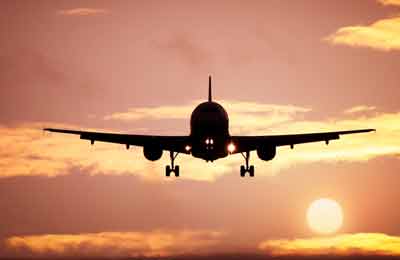
Mideast airlines' profits to hit $1.6bn this year
Montreal, September 23, 2013
Middle East carriers are expected to post profits of $1.6 billion this year, marginally ahead of the $1.5 billion previously forecast, an Iata report said.
The region’s efficient hubs continue to support strong performance on long-haul markets and the impact of the Syrian crisis has been limited, it said.
Passenger demand is expected to grow by 10.5 per cent, the strongest among all regions. But this will be slightly outstripped by capacity growth of 11.3 per cent, the International Air Transport Association (Iata) forecast said.
Iata predicted that Middle East carriers are expected to post a $2.1 billion profit in 2014, their highest ever.
Meanwhile, Iata revised its 2013 global industry profit outlook downwards to $11.7 billion on revenues of $708 billion.
Airline performance continued to improve in the second quarter; however at a slower pace than was expected with the previous projection (in June) of $12.7 billion. This reflects the impact on demand of the oil price spike associated with the Syrian crisis and disappointing growth in several key emerging markets, it said.
Performance in 2013 is considerably better than the $7.4 billion net profit of 2012.
The upward trend should continue into 2014 when airlines are expected to return a net profit of $16.4 billion. This would make 2014 the second strongest year this century after the record breaking $19.2 billion profit in 2010, Iata said.
“Overall, the story is largely positive. Profitability continues on an improving trajectory. But we have run into a few speed bumps. Cargo growth has not materialised. Emerging markets have slowed. And the oil price spike has had a dampening effect. We do see a more optimistic end to the year. And 2014 is shaping up to see profit more than double compared to 2012,” said Tony Tyler, Iata’s director general and CEO.
Airline performance remains strong. This year, airlines are expected to post the same operating margin (3.2 per cent) as in 2006, even with a 54 per cent hike in jet fuel prices. The industry has been able to absorb this enormous cost increase as a result of changes in the industry structure (through consolidation and joint ventures), increased ancillary sales and reduced new entry due to tight financial markets, he said.
Moreover, the industry is expected to have a relatively good year even with global economic growth at 2 per cent. Previously 2 per cent gross domestic product (GDP) growth was considered the point below which airlines posted losses.
Drivers for 2013
Economic Growth: Airline profits generally follow broad economic trends. Business confidence bottomed out at the end of 2012 and we have been expecting an acceleration of economic activity to follow. That has not yet materialised. GDP growth in 2013 is now expected to be 2 per cent which is slightly below the 2.2 per cent recorded in 2012. Within that overall trend, we have seen an acceleration of improvements in developed markets (particularly the US) and a deceleration of growth in some key emerging markets (India, Brazil and to some extent China).
Oil Price: Oil prices are expected to average at $109/barrel (Brent) for the year. While this is $1 higher than previously expected, jet fuel prices have softened slightly. We now expect jet fuel prices to average $126.4/barrel ($1 less than expected). The net impact on the overall fuel bill (which is expected to total $213 billion and account for 31 per cent of total costs) is expected to be neutral. The impact of the Syrian crisis and higher oil prices has been felt more through a dampening of demand.
Passenger: Passenger growth remains robust at 5 per cent, although slightly below the 5.3 per cent previously projected and below the 5.3 per cent growth recorded in 2012. Passenger numbers are expected to grow to 3.12 billion -- the first time that they have topped the 3 billion mark. Yields are expected to be flat for the year (below the 0.3 per cent growth previously projected). It should however be noted that load factors are at record highs (80.2 per cent) and yields in the US are above pre-recession levels.
Cargo: Cargo markets remain in the doldrums. Growth of 0.9 per cent is expected (down from the previously projected 1.5 per cent). The ability of airlines to match cargo capacity to demand is limited by the natural growth in belly capacity that occurs as airlines respond to passenger demand. As a result of this mismatch, cargo yields are expected to fall by 4.9 per cent this year (deeper than the 2 per cent decline previously projected). Cargo revenues are expected to show an $8 billion decline to $59 billion from their peak in 2011. By comparison passenger revenues expanded by $68 billion to $565 billion over the same period. - TradeArabia News Service







